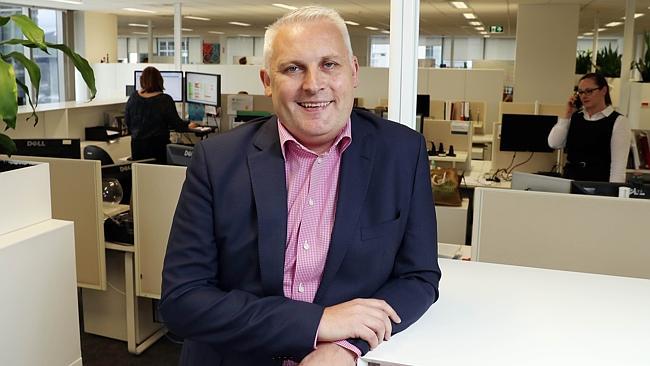Adecco’s Ger Doyle: part-time jobs not a bad thing
The fall in fulltime employment has an upside in flexibility for business and staff.

The job market is rapidly evolving from a traditional fulltime permanent base to a flexible, part-time and contract market, and global recruitment firm Adecco’s managing director Ger Doyle says the change is not always a bad thing.
Australian Bureau of Statistics’ November labour force data shows part-time employment has grew by 133,000 people since last December, despite decreasing by 31,700 people in October.
Permanent jobs are stagnant as business confidence remains static, and fell by more than 89,000 in the year to December. While trend employment increased by 108,100 in the past year, it decreased by 1000 for September for the first time since late 2013.
Doyle says that as millenials enter the workforce and organisations become more frugal, hiring will move towards short-term or part-time employment over the next year.
“We expect part-time to pick up and fulltime to stay static, a lot of that has to do with flexibility in the workplace,” Doyle says. He says business confidence hasn’t changed dramatically and people will be careful with taking on more fulltime staff.
Doyle says the market will see the part-time and flexible work trend continue, because more mothers are returning from fulltime positions to part-time to ensure a good work-life balance.
Workforce management company Deputy’s general manager Kristin Harris says part-time work has been particularly attractive for people in the services industries, with research showing large hospitality companies took on an average 14 new workers — growing from 21 to 35 — in the year to November. Large retailers took on an extra 10.
“Part-time work has always been attractive to young people and students; what’s interesting is that the wider national trend shows older workers seeking the same versatility from employers, which will likely drive fiercer demand for part-time or flexible working hours in the future,” Harris says.
She says the make-up of the Australian workforce was changing and she attributes it to greater flexibility provisions.
Doyle says part-time work cuts employment costs and productivity improves because of the efforts people are putting in to ensure their work is done quickly.
There will also be a focus on encouraging more women to return to work, and to increase the number of women in industries including mining, engineering and the trades.
“At the moment 70 per cent of men are fulltime workers and only 40 per cent of women are,” he says.
“Attracting more women back is huge. In leadership, 16 per cent of women are leaders and 28 per cent of key management positions are women.
“If you increase participation in the workforce you’re going to see more women in leadership roles.”
Trends-wise, Doyle says workers will be in demand over the next year in engineering, information and communication, and health care.
In the digital sphere there will be demand for workers in program management, mobility and personal interface programming, revolving around emerging technologies.
“There will be increasing demand in the digital space as companies look to digitise their internal processes and business analysis,” he says. “We’re seeing huge growth and there’s a gap in the workforce with people coming out of university not filling that.”
“I also see a huge gap in engineering. There are massive operations, not just in Australia, but in Asia as well, looking for staff ... healthcare and medical is also the fastest growing industry.”
Doyle says while blue-collar manufacturing is falling, there is a need for trades and apprentices for major infrastructure works, particularly in NSW. That market is also booming in Southeast Asia and potentially in North America, with Australia well-placed to provide knowledge and labour skills.
Of concern is the limit to how much people’s salaries will rise over the next two to three years, with average annual pay rises hovering at 2 per cent.
There are other ways to keep staff happy, Doyle says, such as offering training, mentoring and promotions.
“Career development is a huge factor to retaining talent and also on-the-job training, internal and external mentoring,” he says.
“People want a career path for the next five to 10 years and taking them on that mentoring path and giving them career development opportunities. They either become valuable to us or they become valuable to the market.”
Doyle says workers in competitive markets also look for companies with a corporate social responsibility, flexible hours and benefits including domestic violence leave or other entitlements.
The news is not all good on the jobs front, and despite several occupations being in demand and companies offering more benefits, some markets continue to shrink.
Morgan McKinley’s Australia Pacific employment monitor for the third quarter found the recruitment market was contracting with an 18 per cent decrease in jobs available, quarter-on-quarter.
The report blamed the nation’s volatile political landscape, which it said was driven by a narrow result in the recent federal elections.
Other concerns include Brexit, instability in the Middle East, the US flexing its military muscle in the South China Sea and global market fluctuations.
Morgan McKinley Asia Pacific’s chief operations officer Richie Holliday says permanent financial services jobs remain relatively steady, quarter-on-quarter, with a slight increase of 5 per cent year-on-year, and professionals seeking new jobs increased by 27 per cent quarter-on-quarter and by 45 per cent year-on-year. Contracting job vacancies had a slight decrease.
“It’s encouraging that despite so much uncertainty, we’re seeing a relatively stable employment market, with financial institutions continuing to release jobs”, Holliday says. He says Asia Pacific economies are in good shape, with China, Hong Kong and Australia, providing good opportunities for job seekers.


